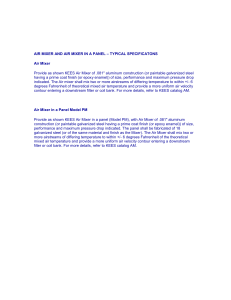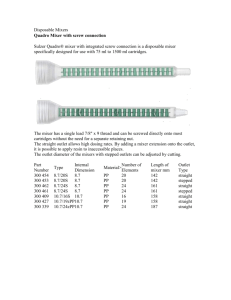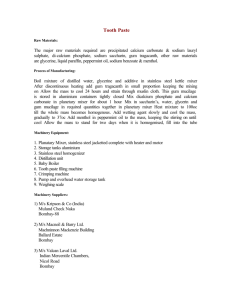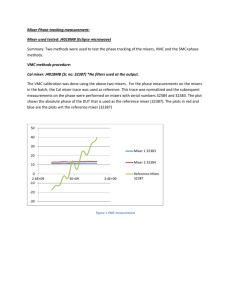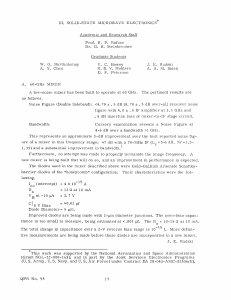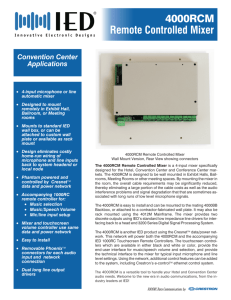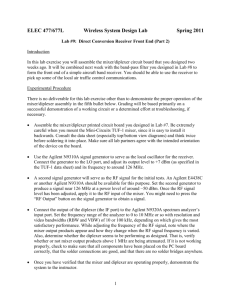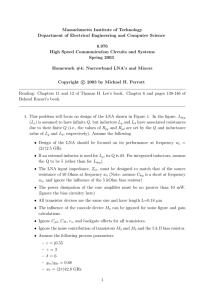Homo Statisticus strikes back
advertisement
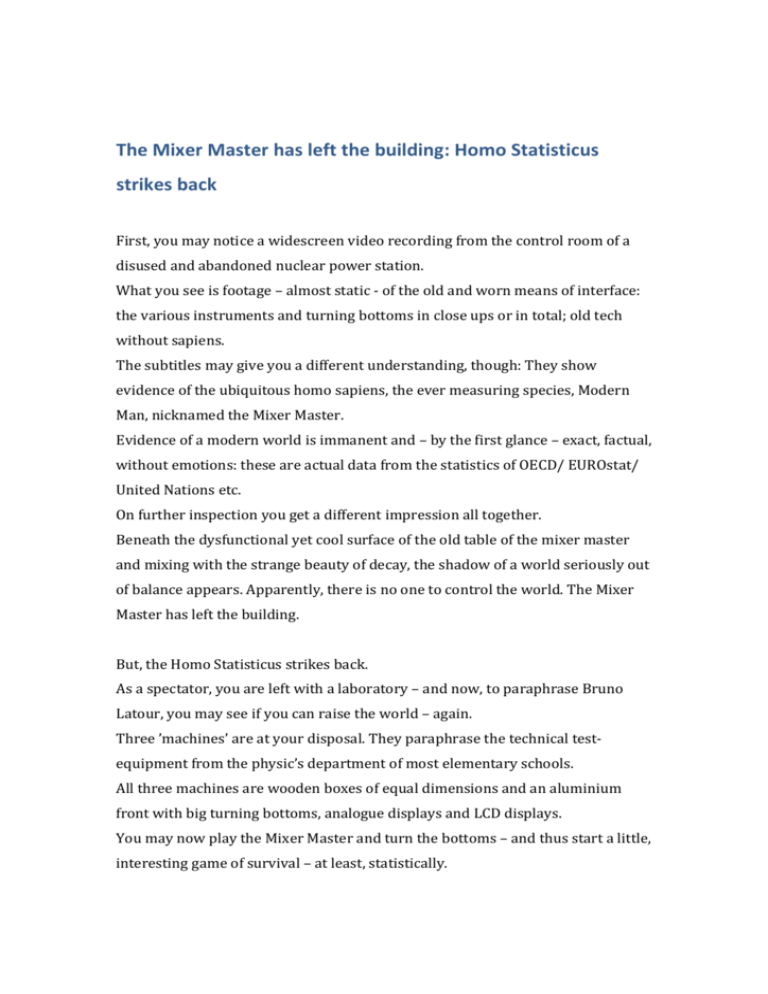
The Mixer Master has left the building: Homo Statisticus strikes back First, you may notice a widescreen video recording from the control room of a disused and abandoned nuclear power station. What you see is footage – almost static - of the old and worn means of interface: the various instruments and turning bottoms in close ups or in total; old tech without sapiens. The subtitles may give you a different understanding, though: They show evidence of the ubiquitous homo sapiens, the ever measuring species, Modern Man, nicknamed the Mixer Master. Evidence of a modern world is immanent and – by the first glance – exact, factual, without emotions: these are actual data from the statistics of OECD/ EUROstat/ United Nations etc. On further inspection you get a different impression all together. Beneath the dysfunctional yet cool surface of the old table of the mixer master and mixing with the strange beauty of decay, the shadow of a world seriously out of balance appears. Apparently, there is no one to control the world. The Mixer Master has left the building. But, the Homo Statisticus strikes back. As a spectator, you are left with a laboratory – and now, to paraphrase Bruno Latour, you may see if you can raise the world – again. Three ’machines’ are at your disposal. They paraphrase the technical testequipment from the physic’s department of most elementary schools. All three machines are wooden boxes of equal dimensions and an aluminium front with big turning bottoms, analogue displays and LCD displays. You may now play the Mixer Master and turn the bottoms – and thus start a little, interesting game of survival – at least, statistically. You may now, simply, manipulate different parameters to create combination of data that is best suited for the different tasks. You can see the result of your interaction with the bottoms on the analogue and LCD displays. All data a real data – about real countries and real people – don’t forget that! They have been collected from the databases of OECD, EUROstat, United Nations, CIA, and different NGO-organisations. Your first challenge is mixing data about the spread and diversity of age groups in a population. The machine tells you when you find a combination that actually exists in a real country – and the name and population of this country is then shown in the LCD display. At the same time, information about four different statistical facts are shown about that country: 1) Gross national income per capita: 2) The balance of gender in the parliament. 3) The annual gross spending of energy per capita. 4) The average number of finished years in school of an adult. The Mixer Master’s table is now yours to demonstrate your abilities to, maybe, decipher the optimum conditions for a population’s survival – or destruction. The graphical output is very similar to that of a population pyramid in that it is a diagram structured from the information that came out of your interaction. Ideally, if the population is healthy, the diagram forms a pyramid. So, it gives you some vital information about the statistical likelihood of the reproduction–rate and survival of that population. Ultimately, it may give you a blueprint of the dynamics of the population on Earth – and how Modern Man is doing after he left the building… The second interface gives you the opprortunity to learn how to manipulate demopraphical parameters – in the sense, ‘how much money can I spend on military, and/or make the rich richer, without the freedom of the press is compromised?’. You may turn a very large buttom (and a smaller one for fine tuning your results), on three identical panels – or ‘fields’. On the end of each field there is a large analogue display. In the first field you may find out about a country’s military expenditure (percentage of GDP). The second field focuses on the spread of income on the entire population (so called GINI). Finally, the third field is concerned with the freedom of the press. You may turn one bottom at the time, and when the data resembles the data from an existing country, all instruments light up. You are then shown the result from the other fields, as well. In this interface the country remains anonymous, however. The questions raised are universal and essential for any Mixer Master, if you are to have a chance to raise the world – statistically, at least. Behind the Latin inscription stating, in English translation, “Give Me a Laboratory and I will Raise the World” (Bruno Latour), the third interface gives you the chance to ’flip’ through a wide range of different statistical values. It also contains a GPS module, which makes the machine site specific – you may only flip through statistical values from the country where the machine is located. If you want to check out another country, you have to move the machine, physically, to a location within that country’s borders. The situation is reversed, it seems: You are given the world, and now you have to reinvent the laboratory in each and every country in that world! When you do that, you are reminded of the following: ”You cannot conceive the many without the one.” (Plato) And, furthermore: “For the bureaucrat, the world is a mere object to be manipulated by him.” (Karl Marx) You are now equipped with the technical and statistical means to measure the most important parameters that play a vital role in the survival of the Modern Man. You may, finally, enter into the position of the Homo Statisticus, if you so wish. But are you ready to strike back? Are you ready to become the next Mixer Master and take on the challenges of the laboratory? Is it too late… or, maybe, too soon…? OECDlab provides you with the hardware, the technology, and the data; you now have some informed decisions to make....
